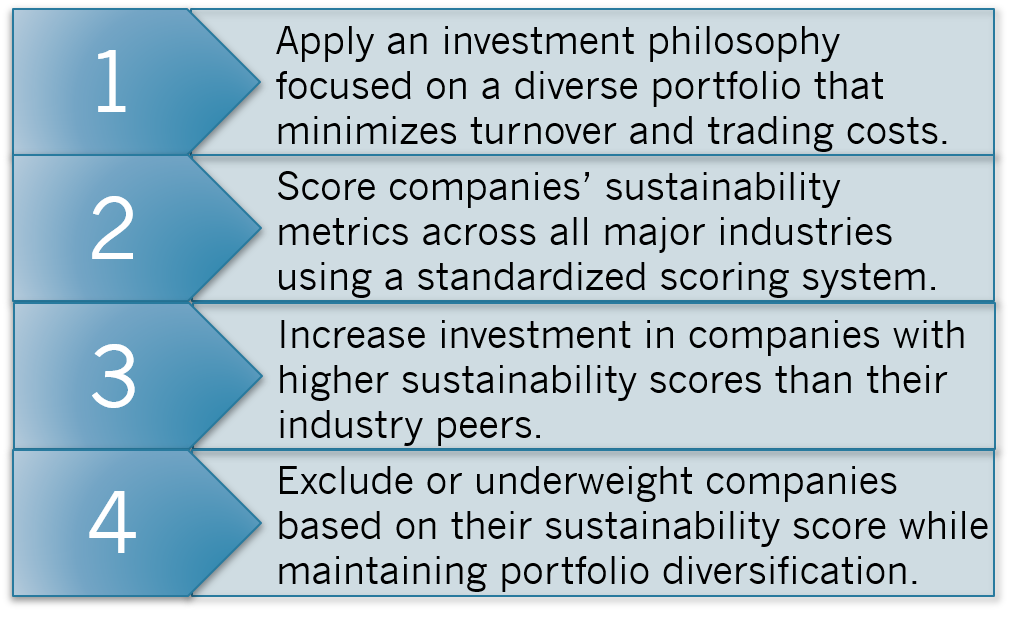By Ashley Bleckner, CFP®, MA
From fossil fuels and greenhouse gas emissions to plastics finding their way into our oceans and waterways, there is a growing interest from individuals wanting to ensure they are contributing to a more sustainable future. This has resulted in many investors wanting to integrate their green ambitions into their investment portfolios.
Americans regularly exercise their right to vote in order to advance the change (or policies) they believe in. However, investors also have an opportunity to express their preferences in the financial markets – through investment choices. When sustainability is a desired outcome, the question becomes: how does one balance their portfolio’s carbon footprint while retaining a strong investment strategy to support their financial goals?
Sustainability is not exclusive to greenhouse gas emissions. It can also refer to responsible land use, industrial waste, toxic spills, and water management issues, among other things. These considerations are relevant to the company directly, but also are applicable to practices of the supply chain the company uses. These two variables (the diversity of the different issues that comprise the term “sustainability” and the indirect pieces of the puzzle) make creating and maintaining a balanced portfolio that is environmentally responsible a bit more complex.
Approach
One tactic to meet this challenge is to start by developing an investment strategy that prioritizes researched based sources of higher expected returns, while also minimizing unnecessary fees and costs (often from turnover and trading).
Next, these companies can be evaluated by using a set of environmental issues that are most important to the investor. The key to this step is creating and using a standardized and comprehensive scoring process, rather than a simple “yes” or “no” screening system. This scoring process should be applied in two ways: across all companies in the portfolio and, more narrowly, for companies within specific sectors.
Given the values of the investor, you are able to then begin excluding and weighting the investments in alignment with the sustainability preferences. For example, if reducing fossil fuels is an investor’s primary green priority, the worst offenders across all industries would be eliminated immediately (those with the lowest scores).
Next, companies can be rated for their fossil fuel sustainability within each individual industry. The companies that are the biggest environmental violators relative to their industry peers (receiving a lower score than their industry peers) will have a smaller weighting in the investors portfolio (smaller investment) until change is made toward greater sustainability. This is a relative comparison, recognizing that today’s markets are highly interrelated through logistical operations. Think of a standard widget producing company. That company uses electricity that is provided from a utility company along with transportation services for its goods from a trucking company, both of which consume fossil fuels daily from a larger energy company.
This could result in companies having incentives to improve the energy efficiency of their facilities, utilities that produce electricity using solar power or wind, trucking companies with improved fuel-efficient fleets and, ultimately, energy companies that decrease their environmental footprint as they reduce their waste and increase their efficiency.
A suggested sustainability investing approach:

Conclusion
It is important to understand that environmental or sustainable investing is best done on a scale (not an exclusive “in” and “out” approach) in order to still meet most investors’ portfolio goals. Investment returns and environmental considerations, need not be mutually exclusive. Rather, they can be successfully balanced when starting with a diverse, broad investment framework and then overlaying the investor’s sustainability values using a scoring scale system. Just like voting at the ballot, choosing where you invest can lead to real change.

